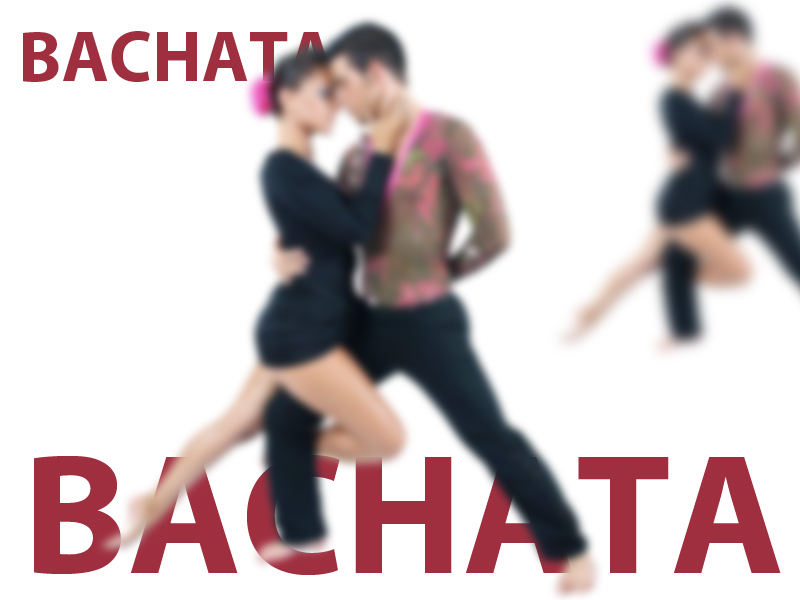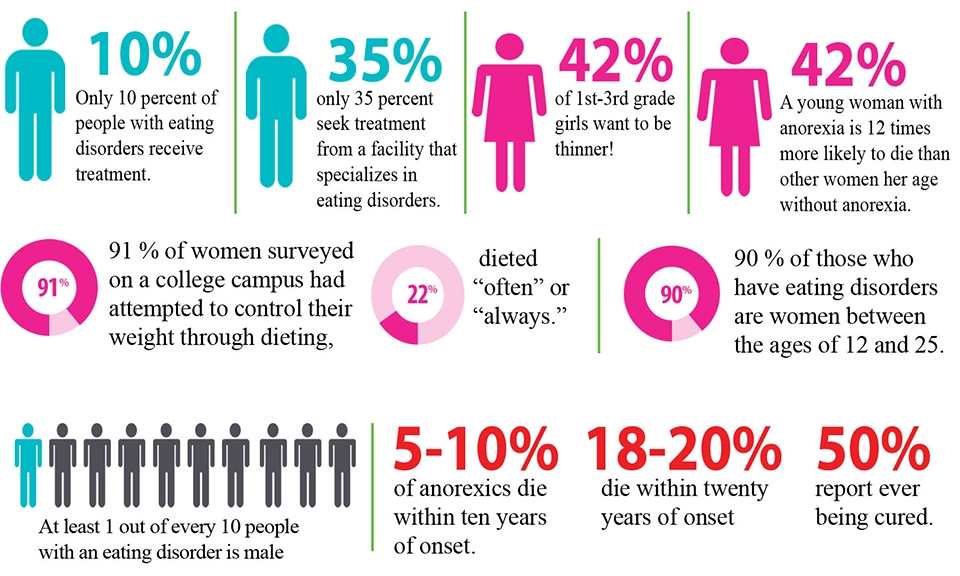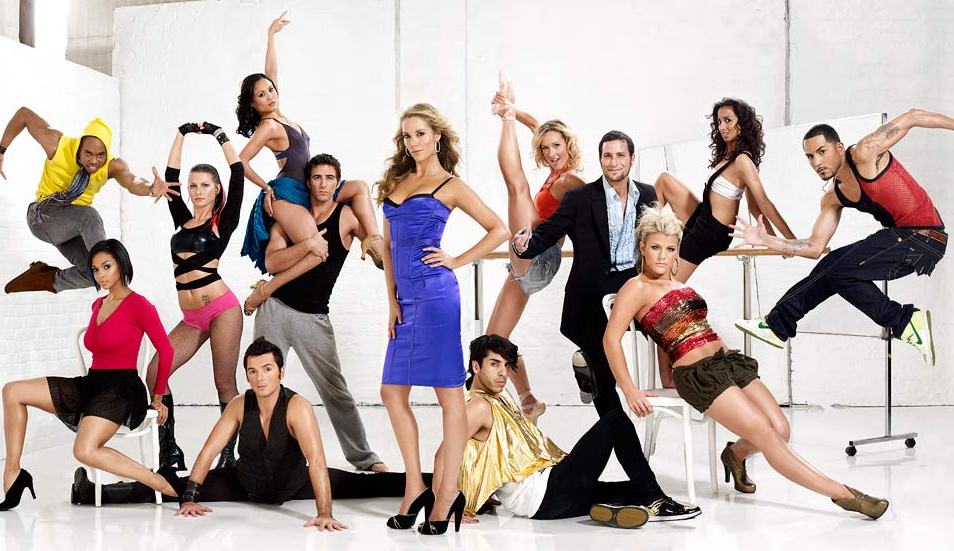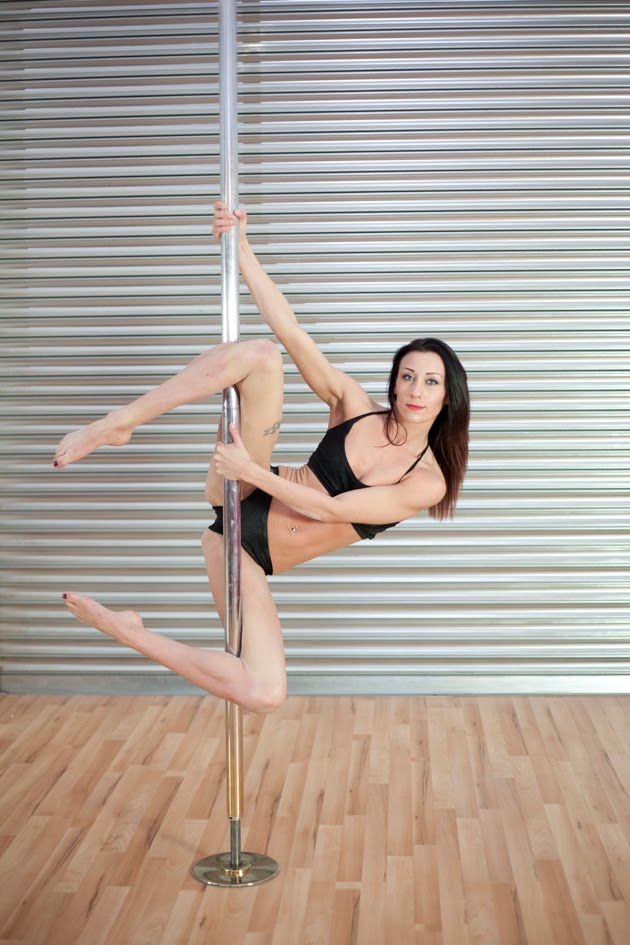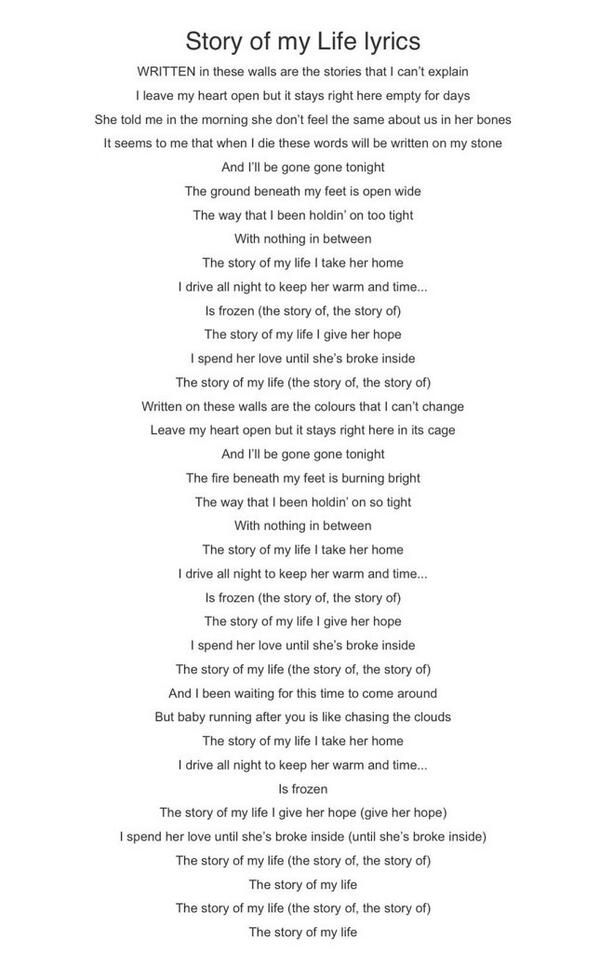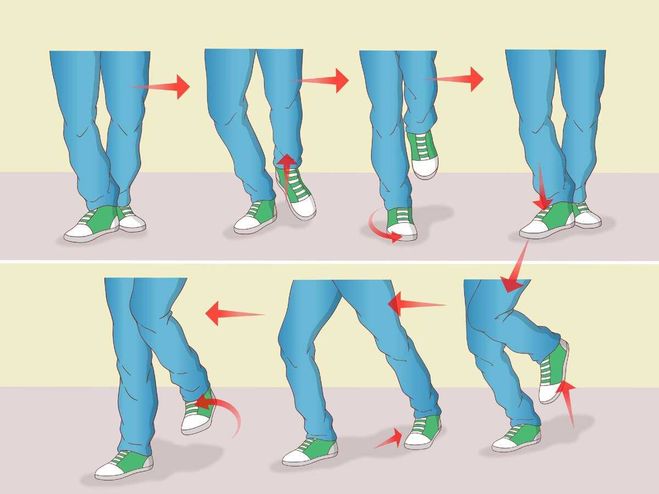How to dance cumbia steps
How to Dance Cumbia | The 2023 Dancer’s Guide
If you’ve been wanting to learn how to dance cumbia, it's time to grab your dancing shoes and get in the groove! This lively and exciting Latin dance is relatively simple, which makes it one of the more beginner-friendly styles of dance. So, even if you don’t consider yourself much of a dancer, you can easily learn how to dance cumbia and master the steps with just a bit of guidance and practice.
Excited to learn how to dance cumbia, but not sure where to start? Our beginner’s guide will introduce you to the art of cumbia music and dance and provide you with all the resources you need to learn how to dance cumbia, whether you want to teach yourself or work with professional dance instructors. Before you know it, you’ll be dancing away your worries and reaping all the wonderful benefits of dance! As experts at the Better Health Channel state, learning to dance can lead to physical and mental health benefits such as improved aerobic fitness and greater self-confidence. So, let's get started!
Jump to Section
- How to Learn the Cumbia
- What is Cumbia?
- Cumbia Steps
How to Learn the Cumbia
Dance Classes
One of the best and most exciting ways to learn how to dance cumbia is to take in-person or online dance classes. When you take a dance class, you’ll receive detailed guidance from top-rated dance teachers and have the chance to practice your skills with a partner, all while getting immediate feedback and tips from the professionals. Not only is it a great and effective way to learn how to dance cumbia, but it’s also extremely fun, especially with friends or fellow dancers! Whether you are looking to learn how to dance cumbia or some other style, be sure to check out the dance classes near you, as well as dance classes in NYC and dance classes in Las Vegas.
via CanvaPractice, Practice, Practice
Of course, the best way to learn how to dance cumbia and to really perfect your moves is to practice as much as you can! The good news is that cumbia is not a particularly difficult style of dance, which means it is relatively simple to learn the steps on your own and practice, even just from the comfort of your own home. All you need is some cumbia music (and there’s plenty of playlists for free on Youtube), a positive attitude and our handy guide to how to dance cumbia. Keep reading to learn all about how to dance cumbia. We’ll explore the history of this art form, including where cumbia is from, and easily break down all the cumbia steps and counts.
All you need is some cumbia music (and there’s plenty of playlists for free on Youtube), a positive attitude and our handy guide to how to dance cumbia. Keep reading to learn all about how to dance cumbia. We’ll explore the history of this art form, including where cumbia is from, and easily break down all the cumbia steps and counts.
What is Cumbia?
History: Where is Cumbia from?
Cumbia music and dance traces its origin back to the country of Colombia during the 1800s, and more specifically the coastal town of San Basilia. Cumbia began as a folk dance that blended together the culture of native Colombians with that of the enslaved Africans, who had been brought over by Spanish colonizers. Then, in the 1940s, Colombian singer Luis Carlos Meyer Castandet emigrated to Mexico and started working with the Mexican orchestra director Rafael de Paz, first bringing this lively style of dance and music to the country. It quickly became popular and as more Mexicans learned how to dance cumbia, it gradually evolved into the subgenre now known as Mexican cumbia.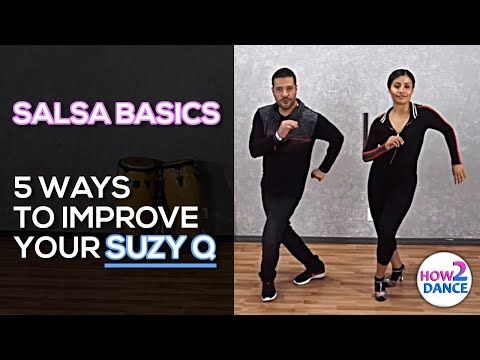 Around the same time as the dance was being adapted in Mexico, cumbia dance was also spreading throughout other Latin American countries, including Peru, Chile and Argentina, and now it has become one of the most popular Latin dances performed throughout the world, both by professionals and amateurs.
Around the same time as the dance was being adapted in Mexico, cumbia dance was also spreading throughout other Latin American countries, including Peru, Chile and Argentina, and now it has become one of the most popular Latin dances performed throughout the world, both by professionals and amateurs.
Cumbia Music
Cumbia music is largely considered by many to be the “mother of all Latin music.” It blends together the rhythm of African drums with the melody of Colombian flutes and maracas, but since its creation has now expanded to incorporate many more instruments, including the guitar, clave, accordion and bass guitar. Cumbia music is lively and energetic, a crossover between salsa and samba. Although it doesn’t feel quite natural to dance salsa to cumbia music, dancing cumbia to salsa music is quite popular among dancers in Central America. So, as you learn how to dance cumbia, make sure you’ve got some authentic cumbia music to play!
via CanvaCumbia Steps
The Basic Cumbia Step
The back-break basic is the main step you need to learn when mastering the art of how to dance cumbia, and luckily, it’s perfect for beginners. It can be broken down into a four-count pattern. So, here’s how to dance cumbia:
It can be broken down into a four-count pattern. So, here’s how to dance cumbia:
First, you start with your feet together, then on count 1, step back with your right foot at an angle – you’ll want to make an approximately 45º angle with your angled right toe almost in line with your back heel (keep a fair bit of distance, though, as you don’t want your feet to be touching). On count 2, step in place with your left foot (easy enough, right?). On count 3, step your right foot back in place with the left. Count 4, just wait and shift your weight. You can even lightly tap your right heel if you’d like to add a bit more flair to your step.
Then, you’ll repeat the same steps, only this time you’ll switch sides, stepping back with your left foot at an angle on count 1. On count 2, step in place with your right foot this time before bringing your left foot back in place again and waiting or shifting your weight for count 4. As you are learning how to dance cumbia, go through the steps slowly to start and then gradually speed up as you get more and more comfortable. Before you know it, you won’t even be thinking about it anymore, and once you’ve mastered this basic back-break step, you’re ready to move on to the more fancier stylistic elements of the dance.
Before you know it, you won’t even be thinking about it anymore, and once you’ve mastered this basic back-break step, you’re ready to move on to the more fancier stylistic elements of the dance.
Dancing With a Partner: Lead or Follow?
When you are learning how to dance cumbia, you’ll need to know if you are the leader or follower. Although the cumbia dance doesn’t require leaders (traditionally men) and followers (traditionally women) to learn different steps, in order to dance together as partners, you’ll need to make sure you are on opposite feet. This means that the leader should first step back with their left foot, while the follower should first step back with their right foot. Doing so will ensure that your feet movements mirror each other and flow in the same direction without your feet unintentionally colliding and disrupting your groove. As you dance with your partner, you can raise your arms in front of you and hold hands before gradually introducing some of the more advanced moves together as you keep exploring how to dance cumbia.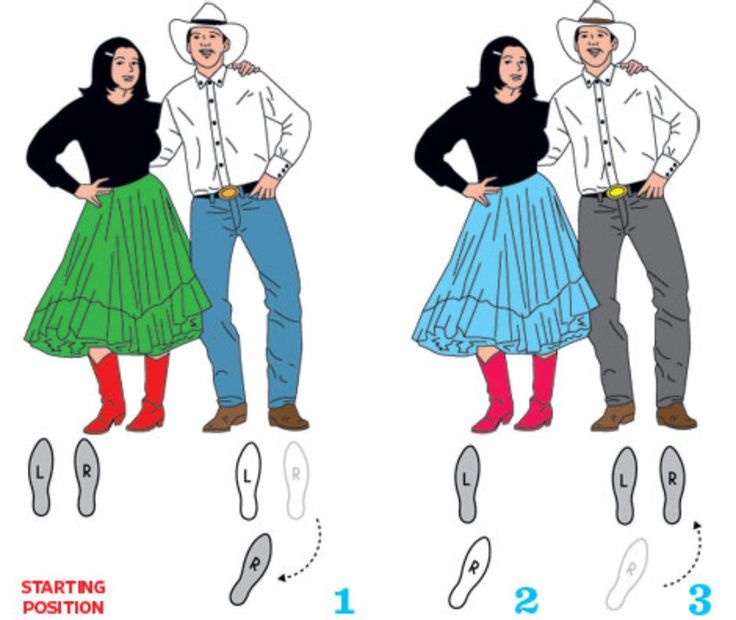
Advanced Cumbia Moves
As you and your partner keep the basic 4-count back-break step pattern going, you can spice things up a bit by adding hip dips, spins and other moves. When learning how to dance cumbia, you must learn how to feel the music, so after mastering the basic 8-count step, you’ll want to spend some time practicing the basic dance pattern to music, letting your hips and body sway to the beat. Once you both feel more comfortable moving to the rhythm in step, you can start experimenting and having a bit of fun with learning how to dance cumbia.
Adding a Turn
Adding a turn is one of the more advanced moves when it comes to learning how to dance cumbia. Starting face-to-face, you and your partner will each step backwards together while continuing to hold hands. Then, release hands. The leader will use their left hand to guide the turn by pulling the follower forward on their right foot.
Important note: the follower should firmly plant their right foot at this point, as this is the foot they will turn on, their pivot point.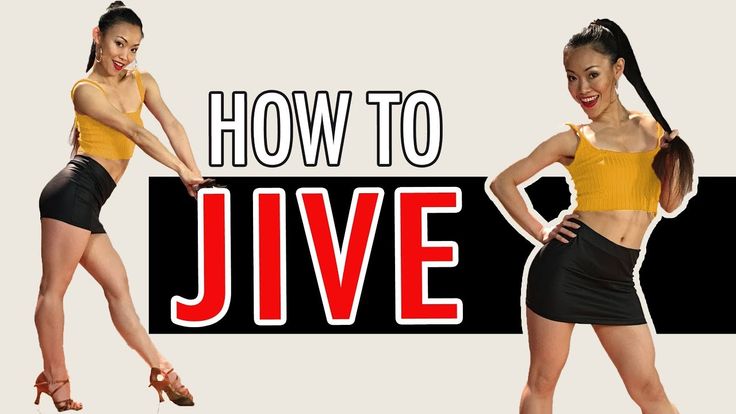 While the follower is planting their foot, the leader grabs their partner’s right hand, raising up their arm and beginning the turn. Finally, to finish the turn, the leader steps forward and to the side on their left foot to complete the turn and bring you both back to the neutral starting point.
While the follower is planting their foot, the leader grabs their partner’s right hand, raising up their arm and beginning the turn. Finally, to finish the turn, the leader steps forward and to the side on their left foot to complete the turn and bring you both back to the neutral starting point.
The counts for the turn are as follows:
- Both step back
- Follower steps forward and the turn begins
- Leader steps forward and to the side, completing the turn
- Arrive back at neutral
Now you’re ready to crank up the music and start exploring how to dance cumbia! Whether you decide to learn on your own, with a partner or at a dance class, the steps are pretty beginner-friendly, which makes this Latin dance a fun and accessible option for everyone, no matter what your skill level. Most important of all, have fun as you learn how to dance cumbia! Keep practicing and before you know it, you just might be a professional Mexican cumbia dancer.
For even more creative ideas and inspiration, check out other experiences happening on Classpop!
Related Articles
A Beginner's Guide to Bachata DancingHow to Belly Dance (With Confidence!)
How to Line Dance Like a Pro
How to Slow Dance With Style
How to Salsa Dance Beginner’s Guide
How to Swing Dance: A Beginner’s Guide
How To Dance Cumbia For Beginners? A Step-By-Step Guide
Tracing its root in Colombia, this alluring dance style – Cumbia – has been a staple in the nightlife of many South American nations. It’s not hard to find a dancer doing the famous steps in discos and clubs, you ever got the opportunity to visit!
Here’s how to dance cumbia for beginners, if you don’t want to miss out on it. Thankfully, the dance itself is quite simple. You can probably master it in a couple of hours if you put your mind to it (and get a partner, too!)
Contents
- Cumbia Dance Style: An Overview
- History
- The Music
- How To Dance Cumbia Solo?
- Count 1: Step Back The Right Foot
- Count 2: Step In Place The Left Foot
- Count 3: Step The Right Foot In Place With The Left
- Count 4: Wait For A Beat & Shift Your Weight
- Switch Sides & Repeat The Steps
- Start From Slow To Quick
- How To Dance Cumbia With A Partner?
- Leader and Follower
- Dancing With A Partner
- How To Add A Turn?
- Dance Cumbia In A Circle
- Advanced Cumbia Moves
- FAQs
- 1.
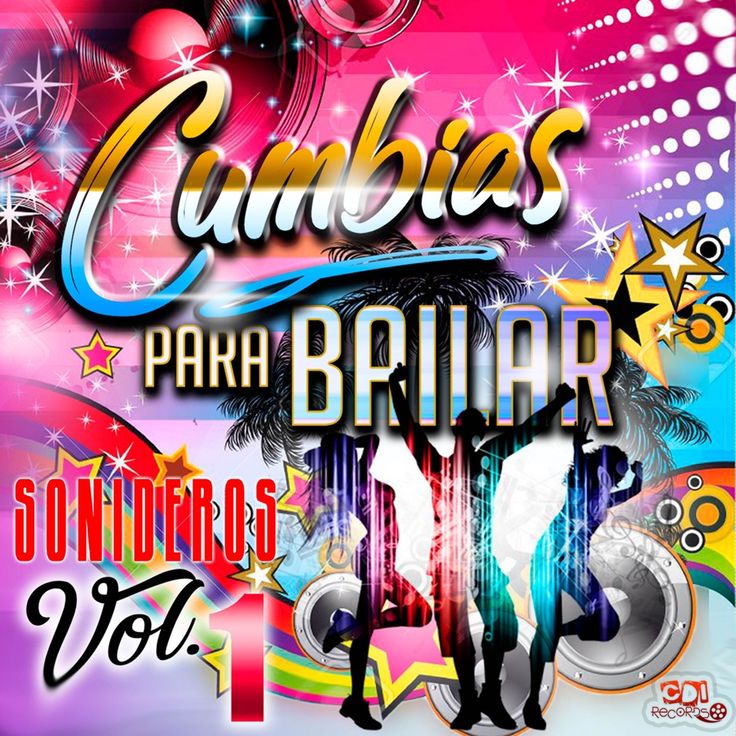 What Type Of Dance Is Cumbia?
What Type Of Dance Is Cumbia? - 2. How Is Cumbia Different From Salsa?
- 3. How Is Cumbia Different From Bachata?
- 1.
- Bottom Line
Cumbia Dance Style: An Overview
History
The term cumbia, according to experts, came from a Bantu word kumbe, meaning “to dance”.
Like many other folk dance styles around the world, there aren’t any exact historical records about it. All we know is that cumbia appeared and picked up steam in the 1800s in the beautiful coastal town of San Basilia, Colombia.
Cumbia is described to be a harmonious mixture of Colombian and African cultures. The latter came from enslaved Africans brought to Latin America by the Spanish.
The big boom for cumbia came in the 1940s when Luis Carlos Meyer Castandet – a legendary Colombia singer – brought the dance style to Mexico. There, it quickly caught the fancy of the masses and soon became extremely popular. So popular, in fact, that the dance crossed borders into many other South American countries from Peru all the way to Argentina.
The Music
For cumbia, music is just as important as the dance itself. The lively music can inspire so much energy that many consider it to be the “Mother of all Latin music”. If you want to imagine what it sounds like, it’s like a combination of salsa and samba.
The music is played by special musical ensembles, known as conjunto de cumbia (or cumbiamba). A cumbiamba can entreat you to a feast of sounds from “conventional” instruments like guitars and bass guitars to more traditional instruments like Colombian flutes and maracas.
If you’re going to practice cumbia, make sure to get yourself a good recording. The spirit of the dance won’t be there if you were to choose some sub-par, non-authentic music!
How To Dance Cumbia Solo?
The basic dance can be packaged into a simple four-count pattern. Once you’ve mastered it, you’re basically ready to take to the floor!
Start from a resting position with your feet together. If you know how to dance salsa, the resting position is the exact same.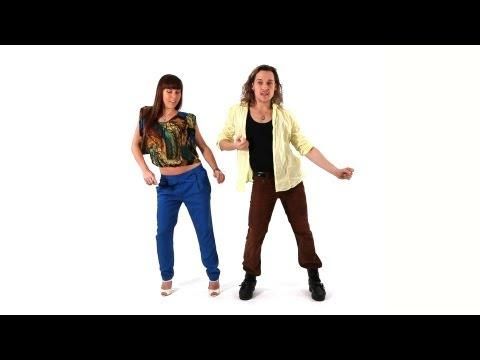
Count 1: Step Back The Right Foot
Move your right foot to the side and at a 45° angle. Your right toe should be in line with the back heel of your left foot.
Keep a fair distance between both feet. They shouldn’t be touching one another.
Count 2: Step In Place The Left Foot
The second count is very simple. Just step in place with your left foot.
If you have a partner with you, here’s a good chance to get your game on and be flirtatious. You can even show your enthusiasm on your face and body language.
Count 3: Step The Right Foot In Place With The Left
Bring your foot back to the resting position (both left and right feet side by side).
Count 4: Wait For A Beat & Shift Your Weight
On the last count, pause for a beat. Then, shifts your weight from the right foot to the left foot.
Shake your hips a little to add some extra flair to your movement.
Switch Sides & Repeat The Steps
Re-do the four-count pattern, but this time, on the left side instead of the right.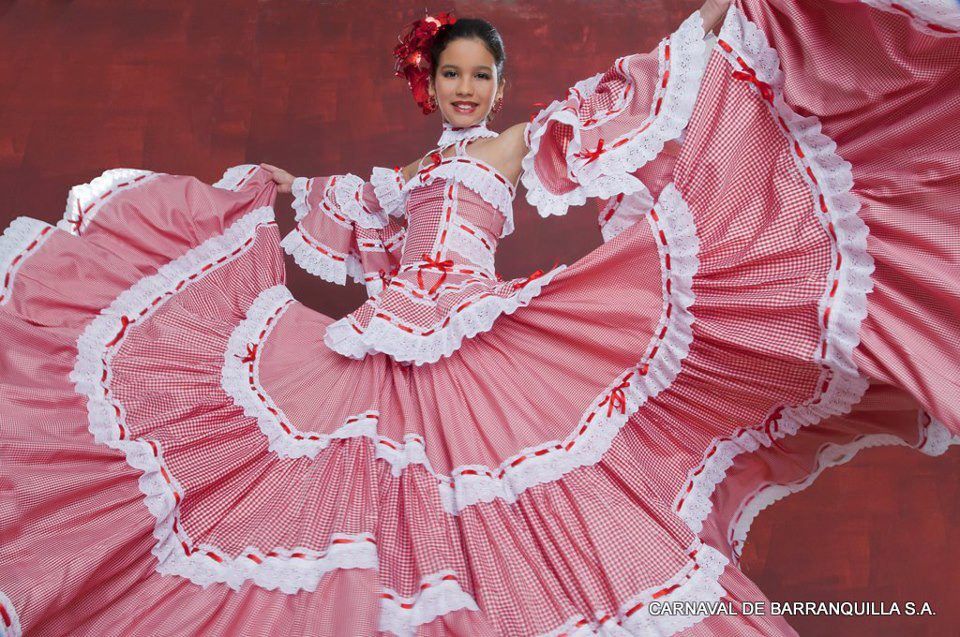
- Bring your left foot back on count 1.
- Step in place with your right foot on count 2.
- Retract your left foot on count 3.
- Then shift weight to the other side on count 4.
Like any other dance, the first time you do it may feel a bit awkward. But the more you practice, the more natural the steps will feel.
Start From Slow To Quick
Start out slow and gradually speed up as you become comfortable with the pattern. When you no longer have to think about the steps and your feet feel like they have minds of their own, you’re ready to hit the club!
However, that doesn’t mean there’s nothing left to learn. The four-count pattern is the most basic part of dancing cumbia. If you want to truly wow the crowd, focus on learning more advanced steps and elements of the dance next.
… or learn how to dance with a partner! After all, cumbia was originally a courtship dance. Having a partner is basically half the fun.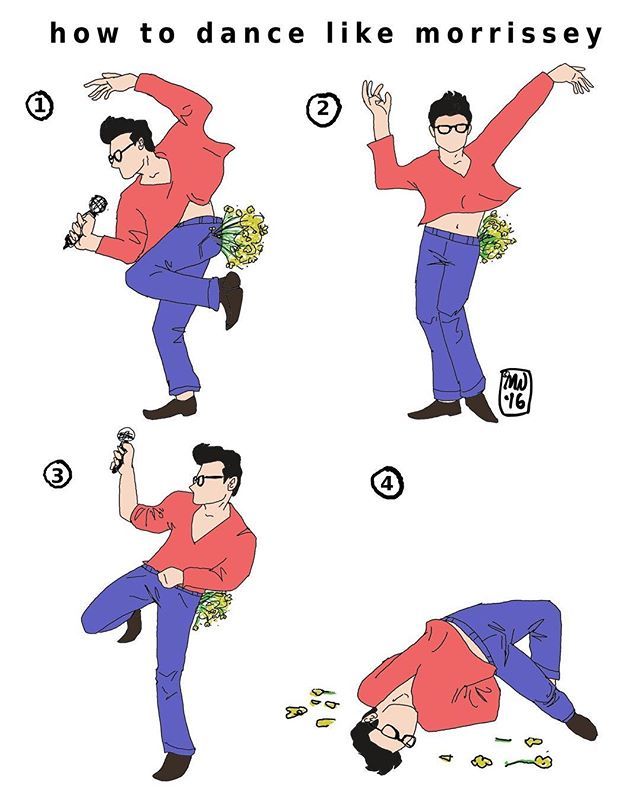
How To Dance Cumbia With A Partner?
Leader and Follower
When you set out to learn (or dance) cumbia with a partner, establish which of you will lead and which will follow. Traditionally, the leader is going to be male and the follower will be female. Nevertheless, in the modern age, anyone can be anything.
The reasoning behind this system is to keep both of you in rhythm. Two partners must dance on opposite feet. The leader will start out on the left foot, while the follower will start out on the right. As you go through the dance, the feet will alternate.
Dancing With A Partner
Not much changes when you dance cumbia with a partner. The basic four-count pattern still applies.
The dance will start out with you and your partner facing one another, about 2 feet apart. Gently link both of your hands together in the middle.
Count 1
The leader will step his right foot back, while the follower steps back on her left foot.
Next, the leader will release his right hand and extend it outward or upward. The follower releases her left hand and does the same flourishing motion. Keep the other hand linked between you two.
The follower releases her left hand and does the same flourishing motion. Keep the other hand linked between you two.
When you step back, your shoulders should touch.
Count 2
Step your foot. If you’re the leader, step your left foot (right foot for the follower).
Count 3
Come back to one another and link your hands back up again. Remember to move your hips and sway them side to side as the two of you dance.
Count 4
Pause for a beat, then shift your weight to the other foot.
Switch sides & Repeat
Re-do the pattern again. Keep on switching from side to side until the music stops.
How To Add A Turn?
Like we said, the same four counts aren’t all there is to know about cumbia. To spice things up, you can add spins, turns, dips, and other moves to make your performance more exciting, too. The easiest to learn right out of the gate is the turn.
On the first count, step back from one another with the leader on his right foot and the follower on her left foot.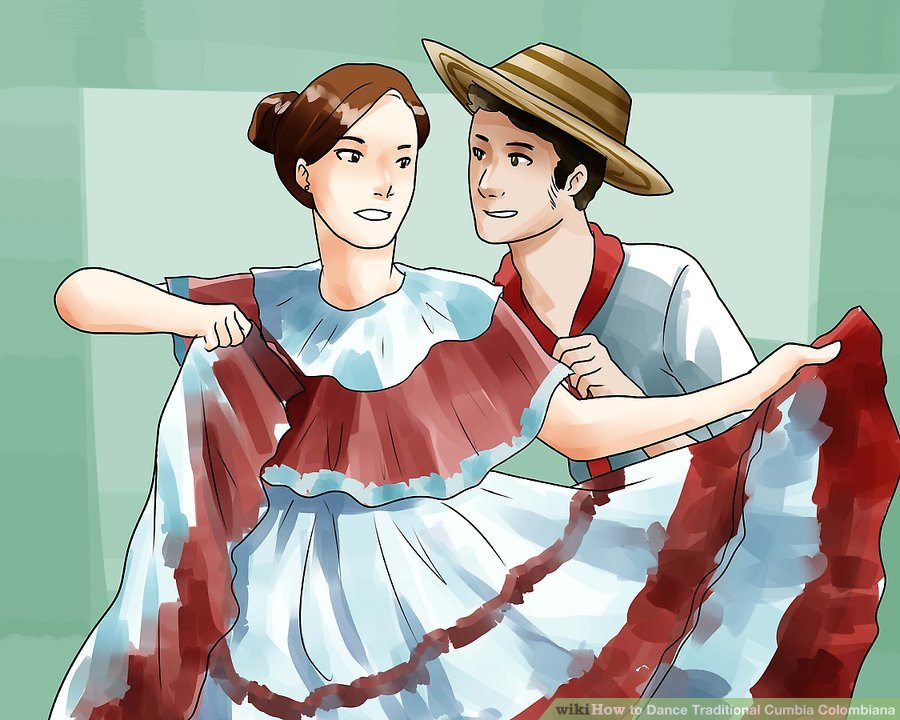 But unlike the standard pattern, don’t release one another’s hands. Instead, keep them interlinked as you step back.
But unlike the standard pattern, don’t release one another’s hands. Instead, keep them interlinked as you step back.
Count 2, reset your feet. As you do, assuming you’re the leader, let go of your partner’s right hand. Your left hand, still holding onto your partner’s, will be used to guide the turn.
Count 3 is the turn. Gently pull your following partner by stepping your left foot forward. The follower will plant her right foot in one place and turn on that foot. As you go through the motion, lift your left hand and arm.
On count 4, the turn is finished. As the follower turns, the leader will step forward and to the side on his left foot, bringing him back to the resting position with both feet together. At the end of the motion, the follower will come back to the resting position, too.
Repeat!
Dance Cumbia In A Circle
Cumbia is often danced in a circular pattern, revolving around the group of musicians playing the music. There’s nothing difficult about it, really. As you go through the basic pattern, you will naturally move yourself (and your partner) to the side. Guide yourself in a circle.
As you go through the basic pattern, you will naturally move yourself (and your partner) to the side. Guide yourself in a circle.
If you’re dancing with other groups, the whole party will typically dance in a circle. Just follow everyone else!
Advanced Cumbia Moves
Advanced cumbia moves include turns, dips, and spins. Once you first start out, it’s highly recommended that you focus on getting the basic pattern down. Once you do, get a feel for the music.
Keep practicing until the pattern is ingrained in you. Afterward, you can have a bit more fun by experimenting with different moves.
FAQs
1. What Type Of Dance Is Cumbia?
Cumbia is a traditional folk dance. As we’ve introduced at the very beginning of the article, the dance style and the music have the spirits of different cultures: African and Spanish.
At first, the dance was more of a folkloric, courtship dance. These days, cumbia has evolved into a social dance that can be done with friends, family, as well as lovers alike.
2. How Is Cumbia Different From Salsa?
Cumbia is a bit slower than salsa. Compared to the frenetic rhythm of salsa, cumbia is more gentle and easier to follow along. The relaxed rhythm and the easy, circular pattern are great for social dancing … but not great for competitions.
Salsa is a lot more preferred in dance competitions due to its showy and technical nature.
3. How Is Cumbia Different From Bachata?
Unlike cumbia and salsa, which shares many characteristics with one another, cumbia and bachata are two totally different styles. Cumbia originates from Colombia, while bachata traces its roots back to the Dominican Republic.
Bachata is danced in a four-step timing, while cumbia dances in either 2/2 or 4/4 dance signatures. Last but not least, the style, music, and moves are totally different between cumbia and bachata, too.
Check more: Types Of Ballroom Dance With Definition & Pictures
Bottom Line
It’s not all that difficult to learn how to dance cumbia for beginners, especially if you’ve had previous dance experience. But even if you haven’t danced before (or think you’re not very good at it), cumbia is still super easy to learn. It won’t take more than a couple of hours to master the basic cumbia steps and move on to more advanced techniques.
But even if you haven’t danced before (or think you’re not very good at it), cumbia is still super easy to learn. It won’t take more than a couple of hours to master the basic cumbia steps and move on to more advanced techniques.
Zumba Kids (Fitness kids) / Dance school "Kiwi Dance"
+7 (909) 919-0006
Moscow,
st. Linden Park, 6A
+7 (909) 919-0006
[email protected]
Dance fitness came to us from the hot beaches of Rio, Havana, from the streets of California and Dominican discos - program. Initially, the basis of this direction of aerobic exercise was rhythmic movements performed to specific music - a simplified version of salsa, merengue, cumbia and reggaeton (with an admixture of mamba, rumba, flamenco and calypso). However, gradually all dance styles and trends were mixed in it. nine0003
There are a lot of intense and rhythmic hip movements in this direction, a lot of fun.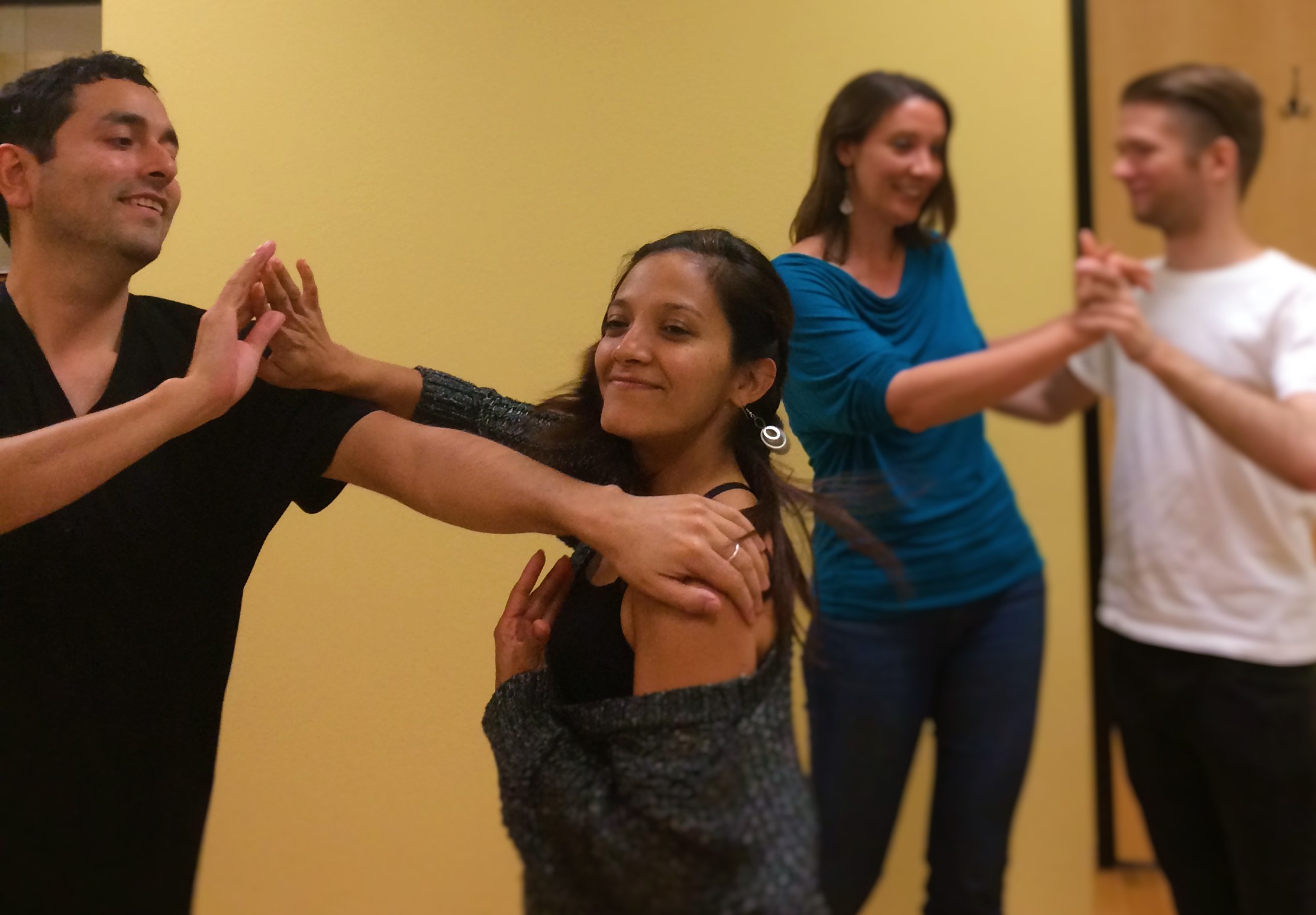 The dance is suitable for both beginners and people who have already danced other styles. You will easily master the basic steps of meringue and hip-hop, salsa, reggaeton and cumbia, you will dance to incendiary Latin American melodies and African drums (a melody with a clear drum rhythm).
The dance is suitable for both beginners and people who have already danced other styles. You will easily master the basic steps of meringue and hip-hop, salsa, reggaeton and cumbia, you will dance to incendiary Latin American melodies and African drums (a melody with a clear drum rhythm).
Zumba classes are suitable for everyone, regardless of age, fitness level or fitness level. nine0005
View schedule
Sign up for a free lesson
The first (trial) lesson will be
for you absolutely free if you sign on us on social networks
Teachers
Meet
Co -coachesZumba, Zumba Gold 45+
Maria has been a ballroom dancer for 11 years. Over 9 years of teaching experience. Licensed Zumba Trainer. nine0003
More details
Dress code
Only sneakers on the feet, overall sporty look (sweatpants/leggings, T-shirt/t-shirt).
Zumba Kids
If you plan to attend multiple classes on the same day, please follow the guidelines for each class. If you sweat in one lesson, then you can’t practice in wet clothes the next, it’s at least uncomfortable, in addition, you can catch a cold. For the same reason, you should not immediately go outside hot, especially in winter. It is not recommended to smoke immediately after training. Watch your diet: even if you are losing weight, remember that the body must receive enough nutrients, especially during physical exertion. Be attentive to your health, if you experience pain after or during class, at least consult your teacher. nine0005
If you sweat in one lesson, then you can’t practice in wet clothes the next, it’s at least uncomfortable, in addition, you can catch a cold. For the same reason, you should not immediately go outside hot, especially in winter. It is not recommended to smoke immediately after training. Watch your diet: even if you are losing weight, remember that the body must receive enough nutrients, especially during physical exertion. Be attentive to your health, if you experience pain after or during class, at least consult your teacher. nine0005
Safety
It's better if you come to training with minimal make-up, especially foundations and creams. In class, the skin needs to breathe, so if you want to look great even in the gym, use cosmetics that do not clog pores. The most beautiful skin is healthy! Hair for many women is a matter of pride, if you are one of them, then feel free to loosen them and dance. This helps to loosen up and show your temperament. But please be understanding if, at the time of performing any particular exercise, movement or trick, the trainer advises you to collect your hair. nine0005
nine0005
Hair and make-up
Traditional dances of Colombia
The green country of Colombia lies in the northwest of the South American continent. The Colombians themselves do not really like the Russian or English pronunciation (“colAmbia”) and are asked to call their homeland “Colombia”. But no matter what language you call it, the word “Colombian” brings to mind festive music, bright outfits and dancing smiling people. In the last article, we talked about the traditional dances of Chile. Let's talk about Colombia today. nine0003
Colombia is not only a country of endemic animals, a variety of birds and outlandish plants. Colombia's musical heritage is no less diverse, for a number of reasons. This is a country where the roots of Indian, African and European dance cultures are mixed. Clear drum rhythms came from Africa, more advanced choreography and beautiful clothes came from Europe, the Indian population brought the energy of the place and the sounds of a flute from a millet stalk. All this has been mixed and developed for centuries depending on the region of the country, which can be conditionally distinguished into three: the Caribbean coast, the Pacific coast and the hinterland with the foothills of the Andes. From region to region, musical traditions can change so much that it seems like they are completely different countries. A prime example of Colombia's current cultural mix is singer Shakira, who combines Colombian roots with Middle Eastern blood and European relatives and is the country's national hero. nine0003
All this has been mixed and developed for centuries depending on the region of the country, which can be conditionally distinguished into three: the Caribbean coast, the Pacific coast and the hinterland with the foothills of the Andes. From region to region, musical traditions can change so much that it seems like they are completely different countries. A prime example of Colombia's current cultural mix is singer Shakira, who combines Colombian roots with Middle Eastern blood and European relatives and is the country's national hero. nine0003
In 1930, Antonio José Restrepo published the Antioquia Songbook, where he indicated a great variety of musical styles and dance styles in Colombia: galeron, carrumba, chucho, buyerengue, mapale, bamboo, paseo, son and others. Now folklore dances can be seen at holidays or at performances of street artists on Sunday evenings.
To understand a culture, it is necessary to speak the same language. Sign up for a Spanish course or go study Spanish in Spain and Latin America.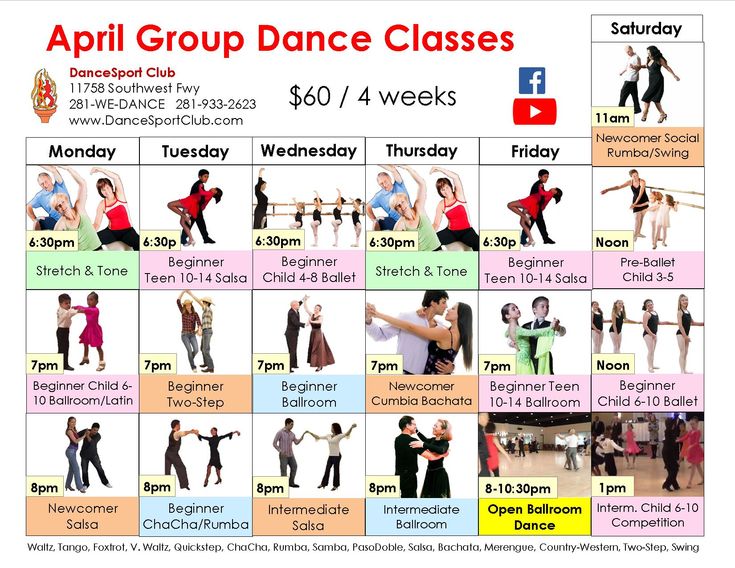 nine0070
nine0070
Mapale
It has African roots and comes from the Caribbean coast of the country. In the original, it is performed to the clapping of the palms and the drum rhythm. The choreography follows the movements of the mapale fish, beating in the air: short steps, quick, energetic chest movements. In general, it resembles the basic movements from modern reggaeton, only at an even more hectic pace. Women's movements are slightly softer and more erotic. It is performed by two rows of dancers: male and female. Mapale, like many dances in general, had the meaning of choosing a partner. It is performed by men bare-chested and wearing light-coloured trousers, while the women are dressed in Indian grass skirts. nine0003
Bullerengue
Came from the Atlantic coast and has perhaps the strongest African roots.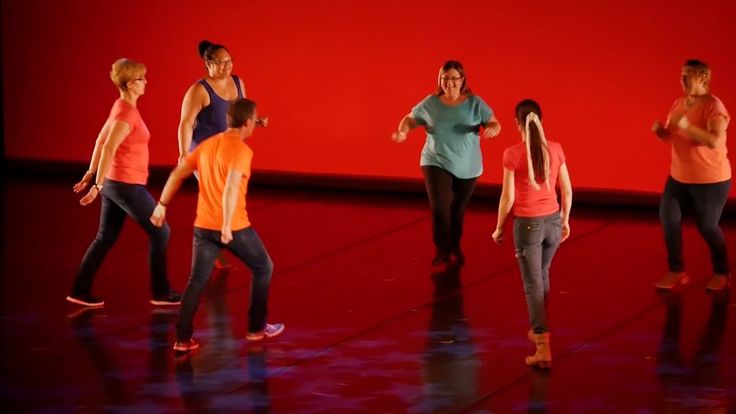 This is a ritual dance performed only by women to the sound of drums, clapping and singing of the choir. However, the sound of the music is no longer as African as in Mapala. Buyerenge symbolizes the onset of the adult period in a girl's life. It is performed by young girls holding the body straight and making slow movements, coordinated and symmetrical. The girl's legs are kept inseparably from the floor, connecting her knees together and slightly bending them. The movements of the hips are smooth and rhythmic, as are the swings of the wide hem of the skirt, imitating the movements of the wings of a butterfly or ocean waves. All movements are calm, solemn. nine0003
This is a ritual dance performed only by women to the sound of drums, clapping and singing of the choir. However, the sound of the music is no longer as African as in Mapala. Buyerenge symbolizes the onset of the adult period in a girl's life. It is performed by young girls holding the body straight and making slow movements, coordinated and symmetrical. The girl's legs are kept inseparably from the floor, connecting her knees together and slightly bending them. The movements of the hips are smooth and rhythmic, as are the swings of the wide hem of the skirt, imitating the movements of the wings of a butterfly or ocean waves. All movements are calm, solemn. nine0003
Currulao
The dance originated on the Pacific coast, bringing together the African heritage of the colonial era. This is a couples dance in which a man fights for the attention of a woman, trying to invite her to dance.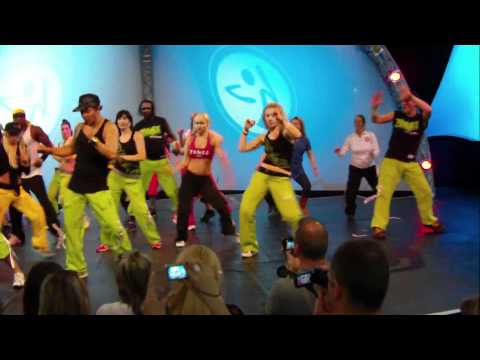 The business of the lady is to politely and evasively refuse, at least not to give up immediately. The dancers are most often dressed in white. Both dancers have a handkerchief in their hands. The man plays it, circling and dancing around his partner, intensifying the effect with gestures, sighs and turns. The lady remains cool to the courtship of the gentleman and tries to deviate from him, gently circling and waving the hem of her skirt. In essence, this dance-game is very similar to the Cuban rumba, however, the curulao is much smoother. nine0003
The business of the lady is to politely and evasively refuse, at least not to give up immediately. The dancers are most often dressed in white. Both dancers have a handkerchief in their hands. The man plays it, circling and dancing around his partner, intensifying the effect with gestures, sighs and turns. The lady remains cool to the courtship of the gentleman and tries to deviate from him, gently circling and waving the hem of her skirt. In essence, this dance-game is very similar to the Cuban rumba, however, the curulao is much smoother. nine0003
Bamboo
The history of this dance stretches from the end of the 19th century. Bambuco was traditionally performed in the regions of the Colombian Andes (Cauco, Boyaca, Santander del Norte, Nariño). Each region had its own variation, but in the beginning of the 20th century, professional choreographers tried to single out a single dance pattern that can now be seen at the holidays. The key figures of bamboo (flirting, courtship, kissing) show the process of conquering a girl by a man. At 1960s Bamboo Suit Officially Adopted:
The key figures of bamboo (flirting, courtship, kissing) show the process of conquering a girl by a man. At 1960s Bamboo Suit Officially Adopted:
- corset and wide-brimmed skirt with floral patterns and lace for a woman, a flower in her head;
- hat, white / striped shirt and poncho for a man. A man can play with a scarf, and a woman can take a hat from a gentleman.
A tipple dance is performed - a Colombian type of guitar and an Indian flute. The rhythms of babmbuko are free and fun. Popular at the summer festivals of San Pedro and San Juan.
Joropo
An ancient dance that originated in the eastern regions of Yano and Colombo from the Spanish fandango and, oddly enough, the European waltz. Choropo performed at family holidays. Back in the 17th century. The church tried to ban the choropo, but it is still danced today. Women's costume - a short and puffy skirt, similar to an exotic flower and sandals. Harp and maracas sound in choropo.
Women's costume - a short and puffy skirt, similar to an exotic flower and sandals. Harp and maracas sound in choropo.
The meaning of the dance is the same flirting. When performing horopo, the body of the dancers remains almost motionless, while the legs beat out a clear and fast rhythm. An incredible number of turns are taken from the waltz. There are many varieties of horopo: central, eastern, guayan, yyanero, kirpa and others. nine0003
Cumbia
Despite the abundance and variety of folklore dances in Colombia, the most popular and famous is the cumbia. Cumbia is a mix of Spanish and African music that originated on the Atlantic coast, in the region of the Madalena River (Bolivar, Cordoba, Sucre, Atlantico and Magdalena regions). Gradually, the dance spread throughout the northern coast and further to the countries of South America. Now it can be found in Argentina, Peru, Venezuela, Chile and Mexico. nine0003
Now it can be found in Argentina, Peru, Venezuela, Chile and Mexico. nine0003
Double dance: a man is courting a lady, holding one hand behind his back, and in the other - a hat, trying to invite the lady for a walk. The movements of men and women are different. Initially, the dance was born at the Fiesta de la Candelaria candle festival, so in the original, folklore version of the dance, women hold lighted candles with one hand, and hold the hem of their skirt with the other. With the same candles, you can protect yourself from the "courtship" of a persistent gentleman. The lady's movements are softer, smoother and more restrained, she glides with short steps, while the man spins around the partner, attracting her attention in every possible way, including making faces and bullying her. Women's costume: a wide-brimmed skirt and a blouse that can fall off the shoulder. The men are traditionally dressed in white with a red scarf around their necks. nine0003
Drums, maracas and local bagpipes were originally among the instruments, but later an accordion brought from Europe joined them, and the cumbia acquired its familiar sound today.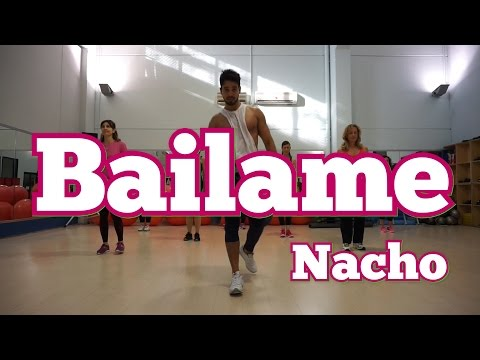 The rhythm of the music is syncopated.
The rhythm of the music is syncopated.
Cumbia is very popular and is still danced even now in nightclubs. Of course, the costume and choreography have changed. And to such an extent that people perform salsa steps to the tune of cumbia, but nevertheless you can easily hear this tune in a disco. nine0003
Salsa caleña (salsa colombiana)
In terms of steps and sound, Cubano is so different from the salsa we are used to that you might think that this is a completely different dance. In salsa kalenya, you will hear less percussion and more wind instruments, namely trumpets, which gives the orchestra a slightly old-fashioned sound.
The style was born in the 30s. 20th century and has been actively developed since the mid-50s, when the annual Feeria de Cali festival opened in Cali, which is still ongoing. While the poor danced the rumba, swing and rock and roll broke into the more affluent circles. Over time, the styles began to mix, they were supplemented by the rhythms of boogaloo (two-beat rhythm) and pachanga (or charanga - after the orchestra that performed the pachanga), in which special attention was paid to footwork. Pop stars from the South American continent such as Hector Lavoe and Celia Cruz came to the festival in Cali, bringing something new. Nowhere did salsa dance so much as in Cali. As a result, in the 80s. the city receives the title of "salsa capital of the world" and holds it to this day. There are many salsa schools in Cali, and it seems that the whole city does nothing but dance. nine0003
Over time, the styles began to mix, they were supplemented by the rhythms of boogaloo (two-beat rhythm) and pachanga (or charanga - after the orchestra that performed the pachanga), in which special attention was paid to footwork. Pop stars from the South American continent such as Hector Lavoe and Celia Cruz came to the festival in Cali, bringing something new. Nowhere did salsa dance so much as in Cali. As a result, in the 80s. the city receives the title of "salsa capital of the world" and holds it to this day. There are many salsa schools in Cali, and it seems that the whole city does nothing but dance. nine0003
The dance itself is characterized by complex and fast footwork at a very energetic pace with complex figures and acrobatic lifts. The dance is suitable for both solo performances and large groups (which is most loved in Colombia). The Colombians themselves will dance this version of salsa in a simple disco.
Salsa choke (chichoke)
Another type of salsa, which originated quite recently, in 2008 in the Aguablanca region in the east of Cali, but, nevertheless, gained popularity among young people. Similar in rhythm to salsaton, the dance involves moving the leg and hip twice to each side with coordinated hand movements. This step is very similar to the movements in bachata, but with twice the speed. The dance is rather single or collective than a pair dance, and is quite suitable for discos. nine0003
Similar in rhythm to salsaton, the dance involves moving the leg and hip twice to each side with coordinated hand movements. This step is very similar to the movements in bachata, but with twice the speed. The dance is rather single or collective than a pair dance, and is quite suitable for discos. nine0003
Choque
However, salsa choque should not be confused with another dance with an almost identical name Choque (different spelling). Simply “choque” is a modern variation of a dance known in the 70s as Bumps, where the dancers hit each other with their hips (this movement can be found in the Brazilian forro and in other directions). However, the modern Colombian choque is performed to rhythmic reggaeton music and is a rather indecent version of Bumps: the partner hits the hips, knees, arms, shoulders and even the head on the buttocks of the rhythmically moving partner. The dance is street and quite provocative. nine0003
The dance is street and quite provocative. nine0003
Vallenato
A very popular genre of romantic song in Colombia, which replaces bachata for Colombians. However, many of the tracks known as bachata actually come from the Colombian vayenato (or "vallenato", as you can hear in Russian as often as possible), and you will be surprised to hear familiar melodies in a slightly different rhythm.
Less percussion, more percussion instruments. The main instruments are caja (percussion), guacharaca (cross-cut reed pipe) and, of course, the accordion. Vaienato is a little more syncopated than bachata. In principle, movements from bachata can also be performed under vaienato, but still this genre has its own choreography. nine0003
Partners stand almost embracing and take two small steps to the right and two small steps to the left. The partner tightly hugs the gentleman with his right hand around the neck. At the same time, oddly enough, bachata, which involves less close contact, is considered more indecent in the cities of Colombia than vayenato. Colombians from big cities themselves say that they are passionate people, but modest enough to dance bachata in public. But the hot climate of the coasts is conducive to greater freedom: there, in discos, they prefer bachata, salsa and reggaeton. nine0003
The partner tightly hugs the gentleman with his right hand around the neck. At the same time, oddly enough, bachata, which involves less close contact, is considered more indecent in the cities of Colombia than vayenato. Colombians from big cities themselves say that they are passionate people, but modest enough to dance bachata in public. But the hot climate of the coasts is conducive to greater freedom: there, in discos, they prefer bachata, salsa and reggaeton. nine0003
Vaienato or “song of the valley” (from Spanish valle – valley) can be both slow, telling about love for the lady of the heart with a detailed description of her, and fast, incendiary. Singer Carlos Vives is considered a classic of the present time in this genre.
Zumba
And finally. Zumba is not exactly a dance, it is rather a dance-sport direction that was born completely by accident in 1999.


